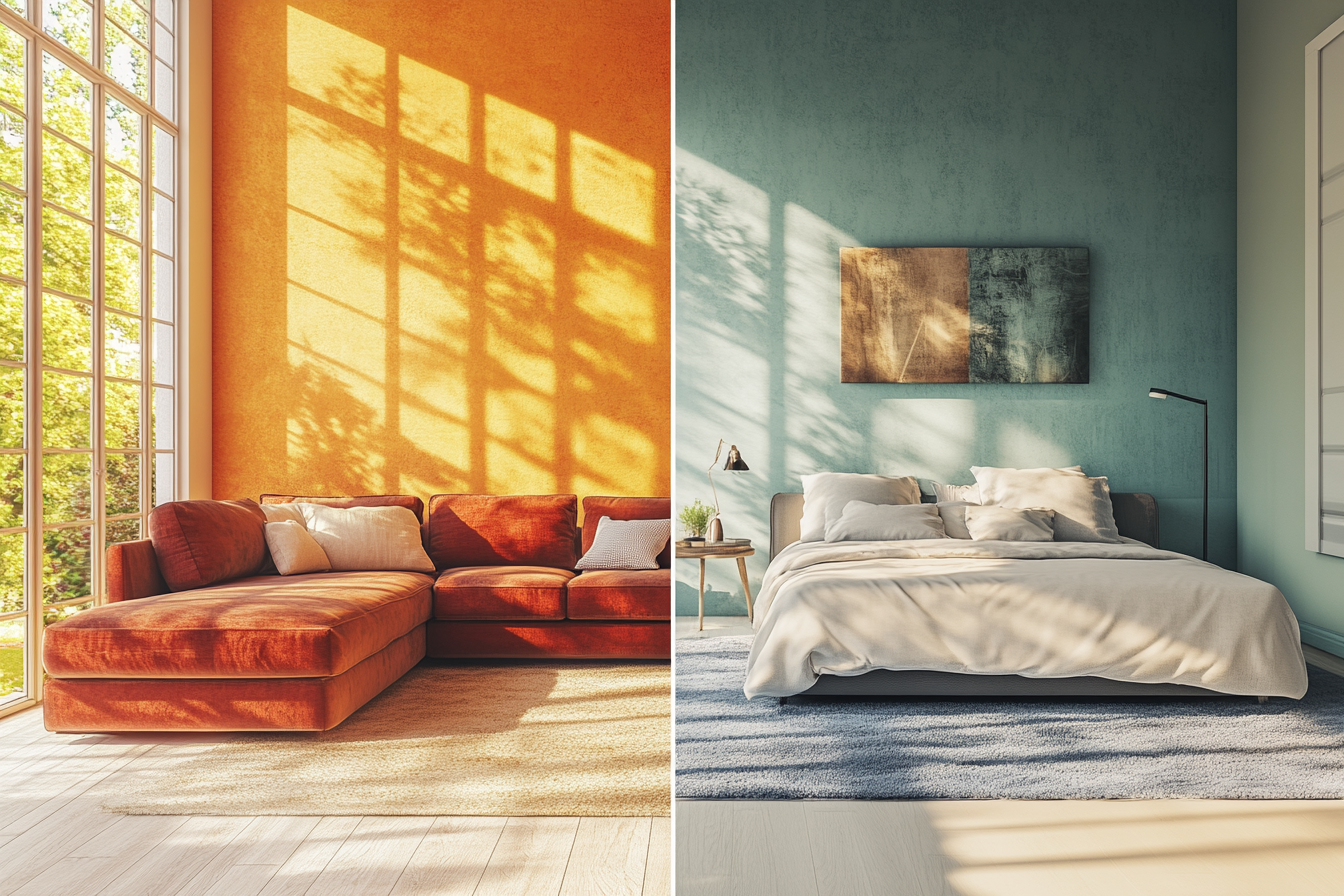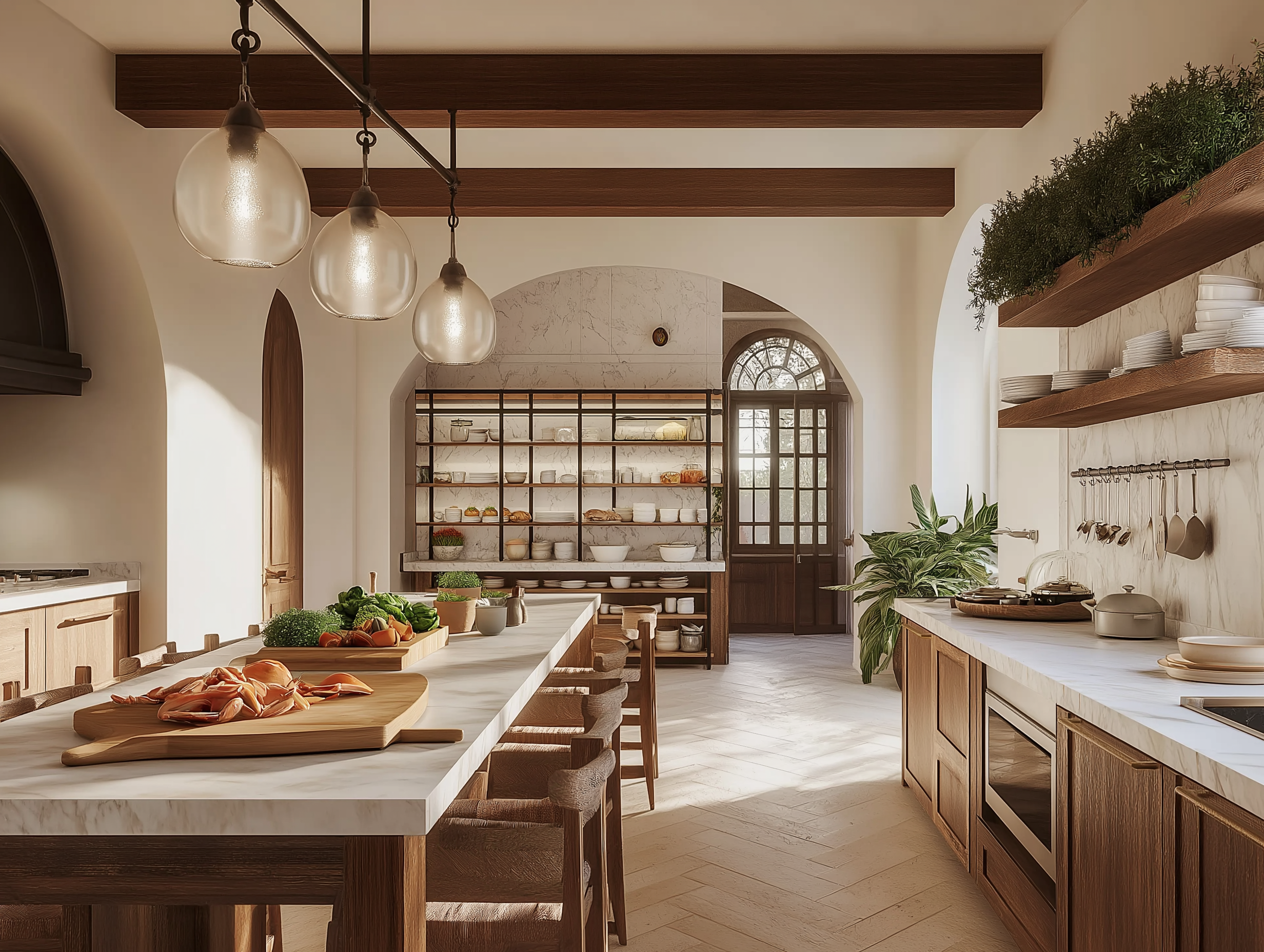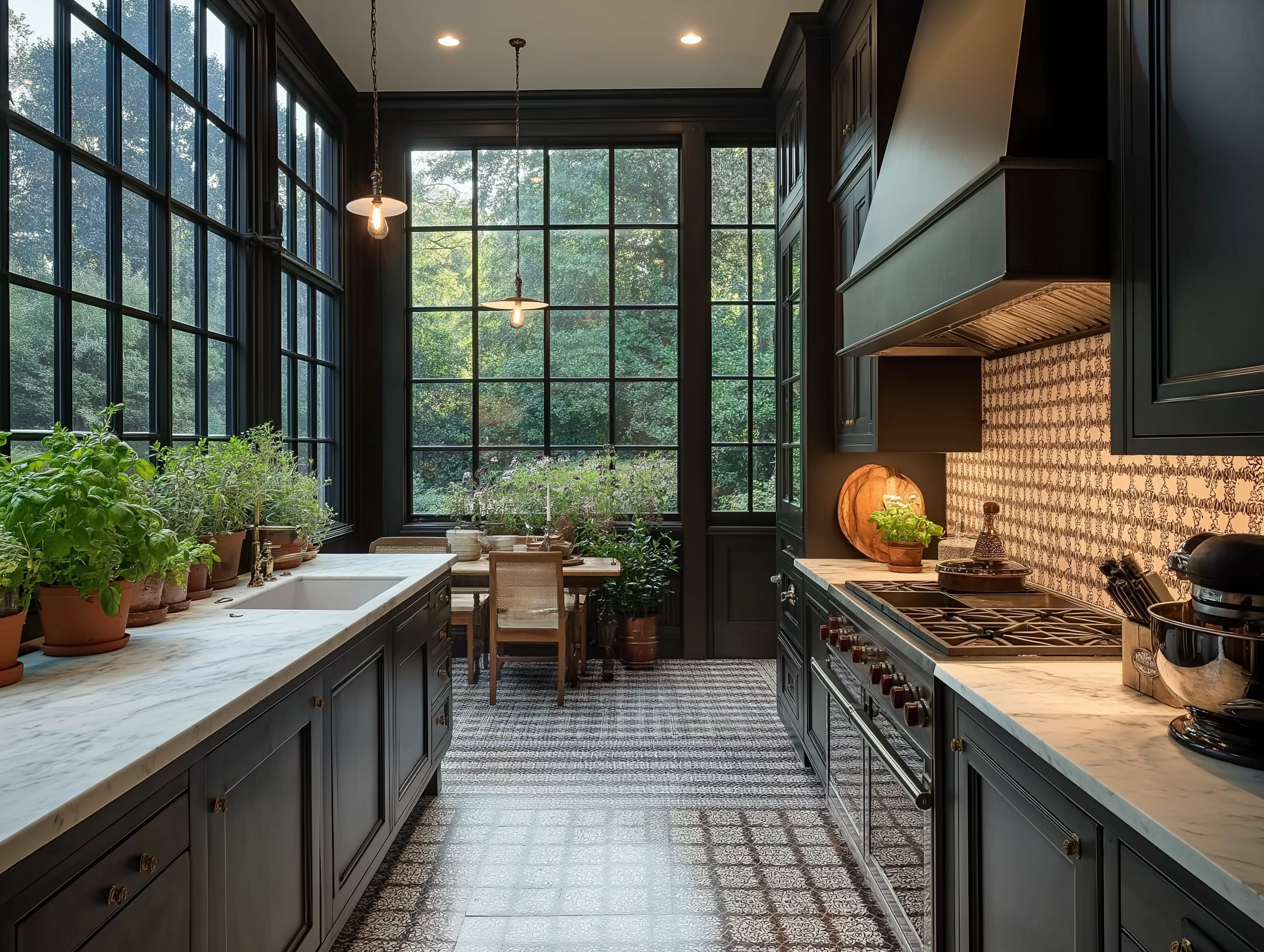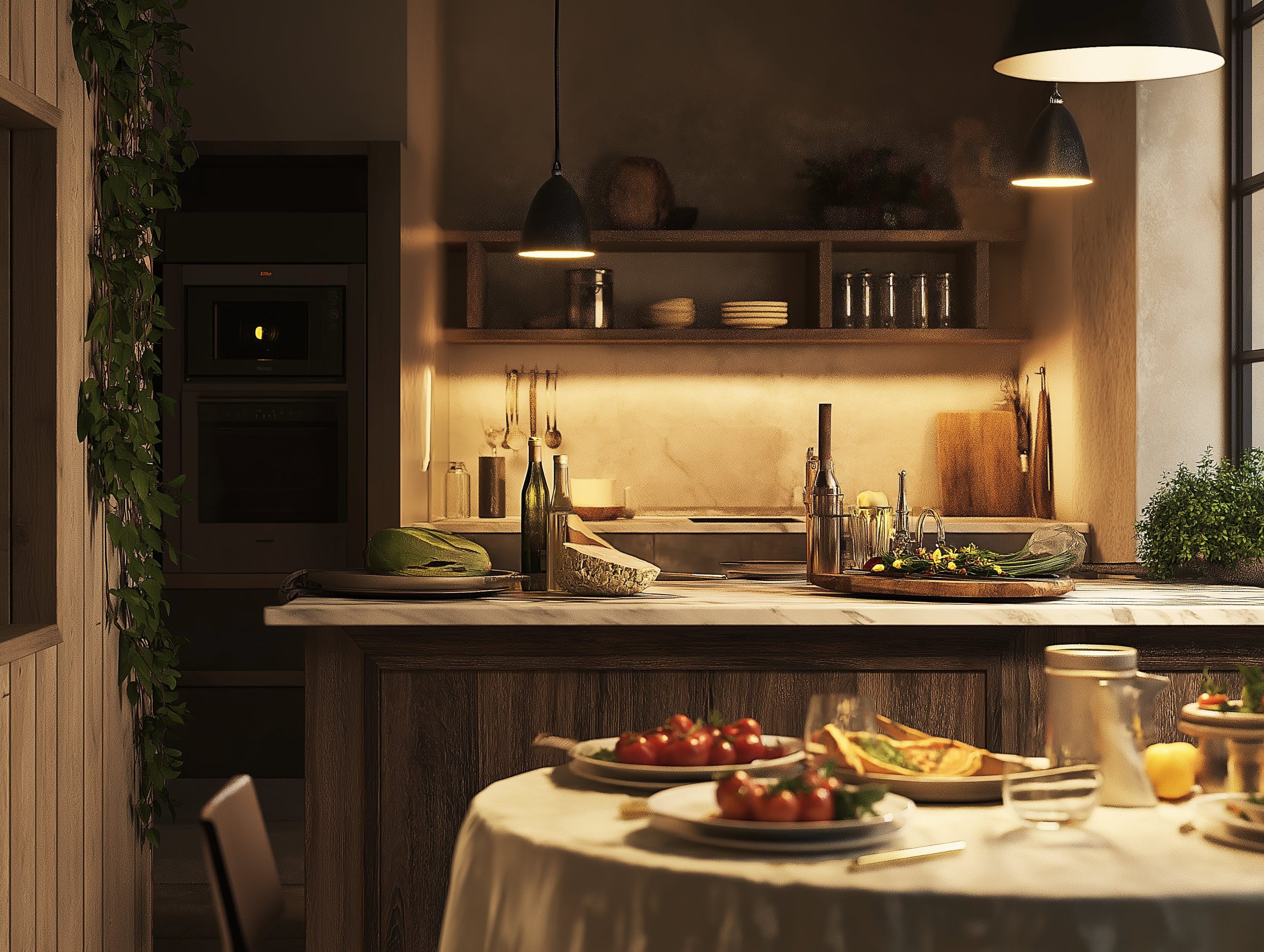Interior Design & Food
A Sensory Connection Between Space and Taste
Food and design have always shared a deep connection—both are expressions of culture, history, and personal taste. As someone born and raised in Rome—a city that has influenced global cuisine for centuries—and having moved to New York a decade ago to explore new cultures and world recipes, I’ve experienced firsthand how food and interiors shape our lives.
From the grand banquet halls of the Roman Empire to the cozy, modern kitchens of today, the spaces where we prepare and enjoy food reflect our traditions, hospitality, and evolving lifestyles. In my work as an interior designer in both Rome and New York, I’ve seen how thoughtful design can elevate the dining experience, blending aesthetics with functionality to create spaces that inspire both cooking and conversation.
Below, we explore how interior design and food are intrinsically linked and how design choices influence our culinary experiences.
1. The Kitchen as the Heart of the Home
The kitchen has always been a center of gathering, nourishment, and culture—from ancient Roman feasts to today’s modern, open-concept spaces.
Functionality Meets Aesthetics: Smart layouts, ergonomic designs, and material choices enhance both cooking efficiency and style.
Social & Cultural Hub: In Italian culture, food is communal. Designing open kitchens with islands encourages interaction and shared meals.
Lighting & Atmosphere: Warm lighting, natural materials, and earthy tones make kitchens feel inviting and comforting.
For more kitchen design insights, visit Architectural Digest.
2. Dining Spaces: Enhancing the Culinary Experience
Dining rooms have evolved from formal banquet halls in the Roman Empire to intimate, multi-functional spaces. Design plays a key role in setting the tone for a meal.
Color Psychology & Appetite: Warm hues like terracotta, deep reds, and earthy tones stimulate hunger and conversation.
Furniture & Layout: A well-proportioned dining table, comfortable chairs, and soft textiles create an inviting space.
Cultural Influence: In Rome, dining is about tradition and storytelling, while in New York, design often blends contemporary and global aesthetics for a dynamic atmosphere.
Explore more on dining space aesthetics at Elle Decor.
3. Food Markets & Interior Design: A Sensory Experience
Markets have been essential gathering spaces since ancient Rome, offering not just food but a visual and cultural experience that has influenced modern design.
Inspired by Historical Markets: Elements from ancient Roman markets—arches, stone textures, and open-air layouts—are reflected in modern restaurant and café design.
Materiality & Texture: Natural stone, exposed wood, and metal details evoke the authenticity of open-air food markets.
Multisensory Influence: Design that incorporates scent, touch, and sound creates a richer experience, much like stepping into a vibrant Italian food market.
Discover how market design influences interiors at Dezeen.
4. Restaurants & Cafés: The Art of Designing for Dining
Restaurants are not just about food—they’re about the experience. In both Rome and New York, I’ve seen how design transforms the way we enjoy a meal.
Mood & Ambiance: Lighting, acoustics, and spatial arrangement shape the dining experience, from intimate trattorias to trendy New York bistros.
Brand Identity & Theme: Every great restaurant has a unique aesthetic that enhances its menu and cultural storytelling.
Material & Sustainability: Eco-friendly interiors using natural, local materials create an authentic and conscious dining space.
For restaurant design trends, check out Hospitality Design.
5. Heritage, Culture & the Future of Food-Inspired Design
Design and food have always been shaped by history, tradition, and innovation. From ancient Roman villas with dedicated banquet halls to today’s fusion of Italian and global styles in urban apartments, interior spaces continue to evolve alongside culinary trends.
Blending the Old & New: Incorporating historical elements—such as marble counters, mosaic floors, or handcrafted wooden furniture—connects past and present.
Sustainability & the Future: Green kitchens, smart appliances, and biophilic design make food spaces healthier and more eco-conscious.
Personalization & Cultural Influence: My journey from Rome to New York has taught me that food and design are deeply personal—every space should reflect a story, a heritage, and a love for cooking.








